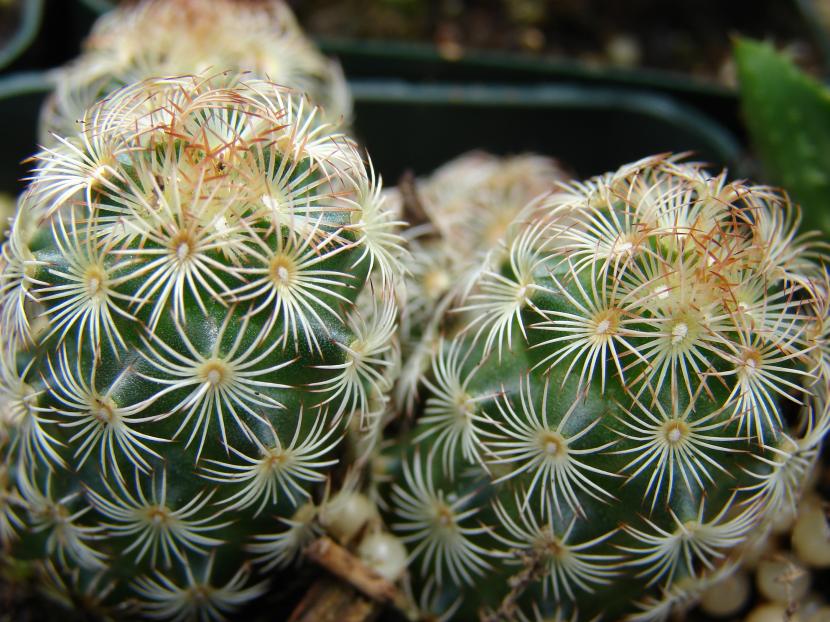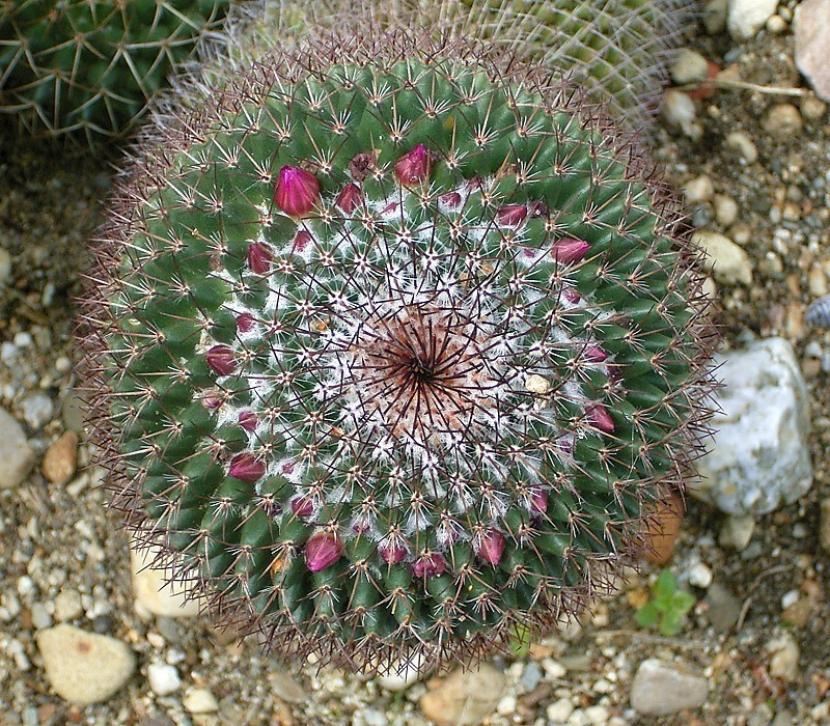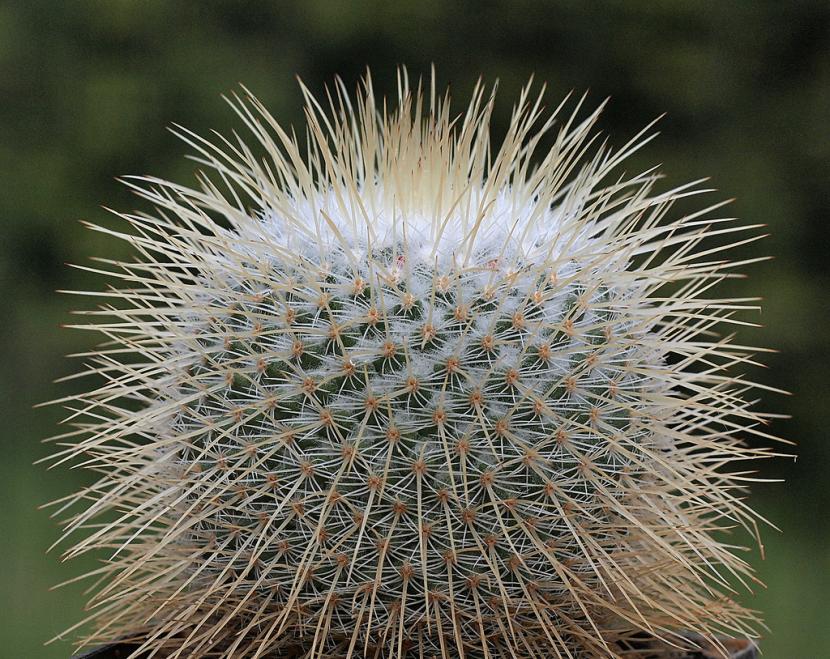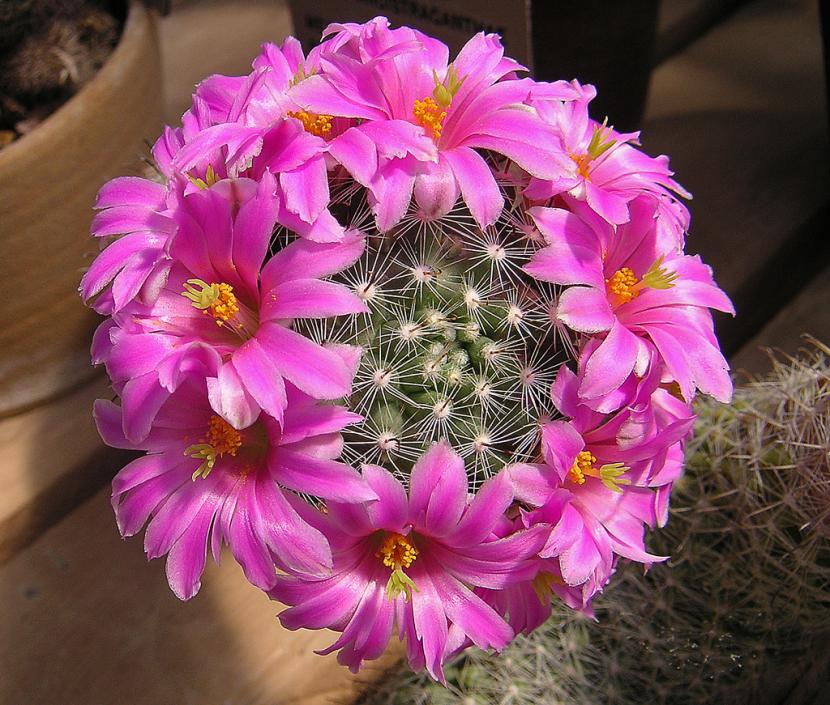
Mammillaria bombycina
And why the Mammillaria? These cacti are very resistant, and there are also many varieties. They can be kept in a pot throughout their life, as their size is adequate for growing in it. And by the way, they have beautiful flowers.
Discover with me what care do they require.

Mammillaria elongata
The botanical genus Mammillaria is one of the largest in the Cactaceae family: contains more than 350 species. Most are native to Mexico, but there are also some in Venezuela, the Antilles and the southern United States. The main characteristic, and by which they are distinguished from the rest of cacti, is the development of the areola, which is divided at the apex on the one hand, and the base (or axilla) on the other. In general, these are globose or cylindrical plants whose size does not exceed 40cm in height. Its flowers are small, red, pink, yellow or white depending on the variety.
As we said, it can be grown in a pot, you can even make great compositions in planters with other small cacti, recreating a desert area.

Mammillaria carnea
And speaking of dry areas, these plants withstand drought quite well, although if they are kept in pots it is convenient to water once a week in summer, and every 10-15 days the rest of the year. They should not lack direct sunlight, as otherwise they would not grow properly.
As substrate you can use black peat with perlite in equal parts, or add river sand to make drainage even easier.

Mammillaria dixanthocentron
Although they have a slow growth rate, you can speed up the pace a bit by fertilizing them throughout the growing season (spring and summer) with a specific fertilizer for cacti.
Endure the cold up to -3ºC for not too long. In colder areas, they must be stored inside the home in a very bright room, for example, near the window. Of course, it is highly recommended that we turn it from time to time so that light reaches all sides of the cactus equally.

Mammillaria boolii
It is not usually affected by pests, but in very dry and hot environments may have mealybugs (especially the so-called Piojo de San José), which can be avoided by doing preventive treatments by spraying them once every 15 days with pharmacy alcohol.
Do you dare to take care of a Mammillaria?
I like to reproduce all kinds of cacti we can exchange plants, ideas, tips
jamtul3@hotmail.com
juanandres diaz cruz